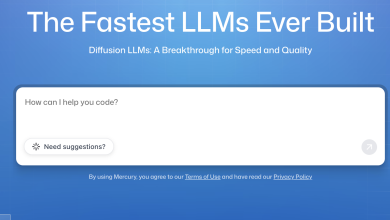
This article looks at the history of ChatGPT from the earliest chatbots, and what the current trend of AI assistants means for productivity in the workplace.
The earliest chatbots were quite rudimentary. Made famous by Weisenbaum with the chatbot Eliza. [1] Since then, chatbots have grown in complexity and are used for everything from customer service to sales leads. However, with the advent of AI, chatbots have taken on a completely new function. The latest avatar is ChatGPT and it’s clearly a technical leap from the existing chatbots.
The article starts with looking at what ChatGPT actually does in terms of its function within the realm of human productivity. To do this, we need to refer to the work of Daniel Kahneman. Daniel Kahneman coined the term System 1 and System 2 – two different and distinct modes of thinking. [2]
System 1 and System 2 are the two cognitive systems proposed by Daniel Kahneman in his book “Thinking, Fast and Slow.” System 1 is the automatic, intuitive, and fast-thinking system, responsible for the majority of our everyday decisions and actions. It operates based on heuristics, associations, and intuitions, with little or no conscious effort. System 2, on the other hand, is the slower, more analytical, and effortful system, responsible for complex problem-solving, decision-making, and logical reasoning.
System 1 is more impulsive and instinctive behavior related to short term pleasure whereas System 2 is more related to thoughtful behavior in the long term thinking foregoing short term rewards.
System 1 is more closely related to the reward pathways related to Dopamine whereas System 2 is more closely related to the frontal cortex. [3]
Let’s look at an example of these two types of thinking. If one were to be asked what 2+2 the answer would automatically come to be 4. One doesn’t need to think too much about the answer. Whereas if one were to be asked what 27 X 35 is, the answer wouldn’t be forthcoming. Using manual calculation would be necessary for most people unless they were experts in the field or had a calculator to hand.
The former is an example of System 1 thinking whereas the latter is an example of System 2 thinking. The prefrontal cortex is often associated with rational thinking and is reported to be activated in system 2 thinking more than in system 1 thinking. A good example of how important this is that dolphins have larger brains than humans however this area is a lot smaller and dolphins aren’t usually associated with higher level rational thinking. [4]
So what does a tool like ChatGPT do ?! It extends human productivity by reducing the “cognitive load”. [5] That is, we are able to produce higher level thought using much less System 2 thinking which is associated with effort. Daniel Kahneman reports through his experiments that pupils would dilate when people do this sort of thinking. It is also reported in other experiments that drinking lemonade or a sugar loaded drink improves productivity in high cognitive load tasks.
ChatGPT, as an artificial intelligence language model, operates similarly to a synthetic prefrontal cortex, which is the part of the brain responsible for executive functions such as decision-making, planning, and problem-solving. ChatGPT is capable of processing large amounts of data, analyzing patterns, and generating coherent responses in a human-like manner.
In essence, ChatGPT can be seen as a synthetic prefrontal cortex that can simulate human-like thinking and decision-making, providing us with the ability to process vast amounts of information, make judgments, and solve problems in a way that is similar to how the human brain operates.
Other tools similarly provide such support like Excel by reducing the cognitive load but never before in human history are we able to get “ready made answers” to complex Decisions which are squarely in the realm of human. As an example, AI-powered F-16s can dogfight themselves which is generally associated with top level fighter pilots as anyone who has watched TopGun would attest to. [6]
ChatGPT and similar tools will exponentially improve productivity in the workplace by providing an avenue for everything from programmers to lawyers to finance professionals and designers to dramatically reduce their cognitive load by getting “ready made” answers. And because a tool like ChatGPT can potentially tap into all the information on the internet, the quality of answers, theoretically at least, should be much higher than what even an “expert” can produce. Humans are then freed up to critique those answers and improve on them rather than develop them from scratch. Just the way machine learning algorithms can classify cancer better than radiologists with a higher degree of accuracy [7], and AI tools can similarly provide improvements in various other domains which are at the level or higher than experts – only time will tell how this will improve productivity. Imagine a developer having to check 200 lines of code instead of two developers – one writing the 200 lines of code and another checking it. This is exactly what GitHub copilot, also powered by OpenAI can do. [8]
Is there a downside ?! Sure – the creativity, panache and original thinking associated with humans will be diminished. But doesn’t that mean it allows humans to focus on higher level thought whereas automating a large number of mundane tasks ?! Radiologists can look through 100 AI generated results instead of generating results themselves. A person having to write 100 emails will have to simply check the content of those emails rather than writing those emails themselves. Larry Page provides an anecdote which is pertinent in this regard. A few hundred years ago, we all humans were primarily involved in subsistence farming or hunter gatherers. However, as technology progressed, we were freed from that into providing more complex functions as we were able to dedicate less time to farming to feed the entire community. [9]
Will ChatGPT produce Einstein’s theory of relativity or Newton’s three laws of Motion. Probably not. But an application of AI has already solved the protein folding problem (DeepMind, a Google Enterprise) which hasn’t been cracked by scientists before. [10] Go, a traditionally difficult game was also cracked by AI. [11]
In conclusion, we can say in the context of Daniel Kahneman’s System 1 and System 2 – ChatGPT and related tools are a form of “synthetic prefrontal cortex” which reduces the cognitive load on the user and allows them to multiply their productivity. The possibilities are endless.



